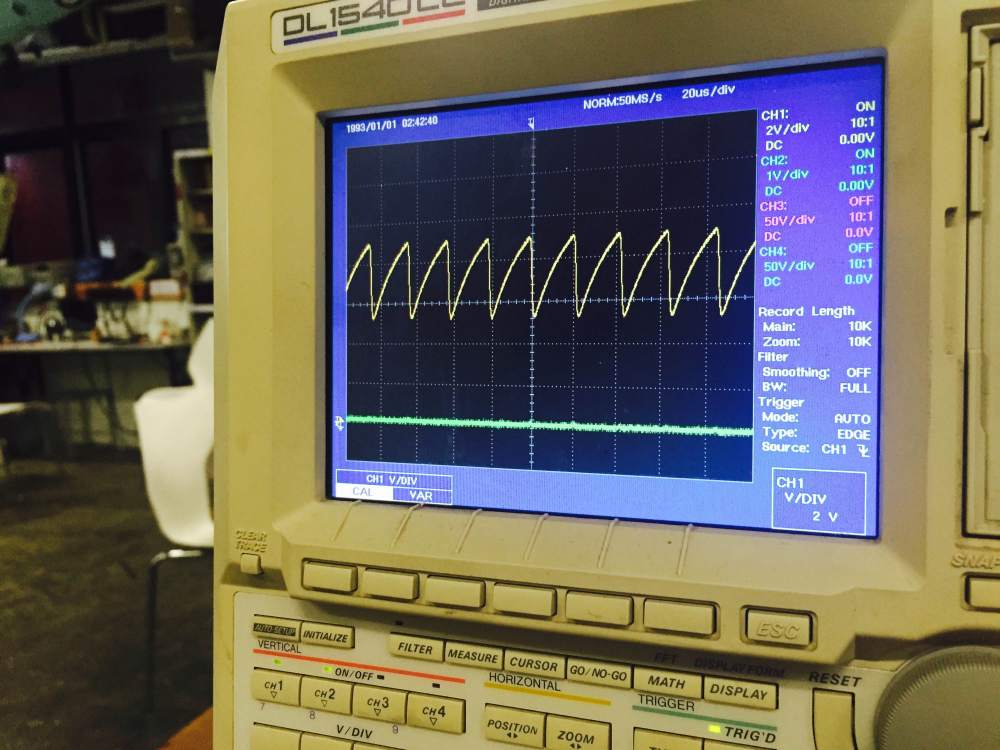Tonight I created a working guitar amplifier on a breadboard. It runs on 12v, and produces a decent amount of power (~1 watt) for practicing purposes when connected to a suitable speaker. I used a medium sized 4 Ohm one, visible in the video. The circuit is shown below:

The simplicity of the circuit stems from the use of this cool oscillator:
A sawtooth waveform at approximately 50Khz, with a nearly-linear ramp, is produced by the S9014 BJT. This waveform is approximately from 5v to 9v:

The guitar signal is 200-300mV peak to peak, and the sawtooth is scaled to match this amplitude. Both the guitar signal and the sawtooth are coupled to 1/2 the supply voltage, with a potentiometer used to fine tune the overlap between the signals.
Finally, both signals are fed into a comparator (LM311), and the output from this drives the gate of a MOSFET. A 10nF filter capacitor is added to the sawtooth signal to reduce oscillations caused by feedback from the speaker via the power supply rails. Some hysteresis on the LM311 would probably help even more. The large power supply decoupling capacitance also helps to address this: without it, spikes appear in the oscillator waveform, and wild high frequency oscillations can appear in the output.
Despite amplifying essentially only half the waveform, and various other limitations, the sound quality is surprisingly good. See video of the amplifier in action here:
